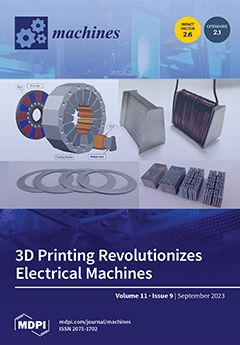In electrical discharge machining (EDM), the tool electrode is one of the substantial components of the system, and it ensures the success or failure of the EDM process. The electrode’s role is to conduct electrical charges and erode the workpiece to the desired
[...] Read more.
In electrical discharge machining (EDM), the tool electrode is one of the substantial components of the system, and it ensures the success or failure of the EDM process. The electrode’s role is to conduct electrical charges and erode the workpiece to the desired shape. Different electrode materials have different impacts on machining. Certain electrode materials remove metal quickly but wear out rapidly, while others degrade slowly but the material removal is too slow. The choice of the electrode has an influence on both the mechanical properties, such as metal removal rate (MRR), wear rate, surface finish, surface modification and machinability, and the electrical properties, such as sparking initiation, time lag, gap contamination and process stability. There are factors to consider when fabricating an electrode, which include the type of workpiece materials, the metallurgical alloying of the materials, the choice of fabrication techniques, the intended use of the electrode, and material cost. Considerable challenges in EDM electrode fabrication have been reported, which include excessive tool wear for green compact electrodes, high toughness for sintered electrodes, and poor rigidity for additively manufactured electrodes. To address these issues, researchers have explored different manufacturing methods, such as casting, conventional machining, electrodeposition, powder metallurgy and additive manufacturing. In this paper, the various techniques attempted and adopted in EDM electrode manufacturing are analyzed and discussed. This paper also sought to give insight into EDM, its various forms, the dielectric fluid’s properties, EDM electrode’s size and shape, the effects of the electrode on the EDM process, material removal, electrode wear, present technologies for electrode fabrication, and the limitations of these technologies. Finally, directions for future research are highlighted.
Full article





